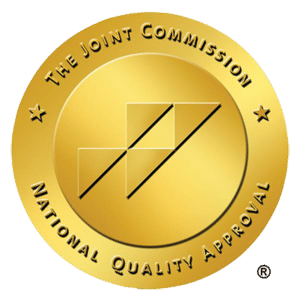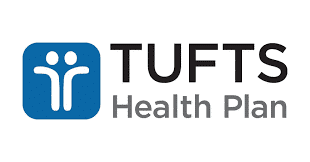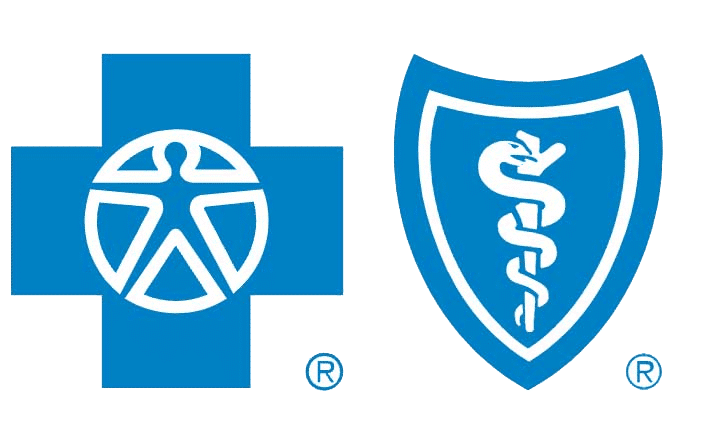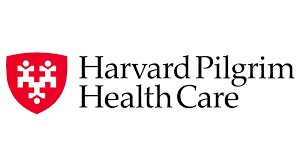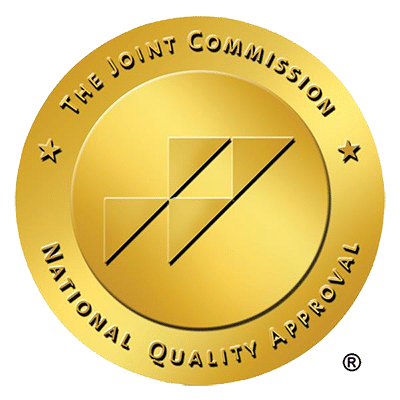What do the numbers say about the opioid crisis? Diving into opioid addiction statistics offers a sobering reality check: a surge in usage and deaths that signals a nation grappling with a dire health emergency. This article unpacks the statistics that sketch the magnitude and devastation of the opioid epidemic, setting the stage for a deeper understanding of its progression and impacts.
Key Takeaways
- Opioid addiction, influenced by genetic and environmental factors, often begins with prescribed medications like oxycodone and can lead to physical dependence and severe consequences including disability and death.
- Opioid overdose deaths, particularly from synthetic opioids like fentanyl, have escalated to a national crisis with over 106,000 deaths in 2021, signifying a need for comprehensive public health strategies and interventions.
- Treatment for opioid use disorders requires an integrated approach including medication-assisted treatment, counseling, behavioral therapies, and recovery support, while prevention efforts focus on education, harm reduction, and increasing access to life-saving medication like naloxone.
Understanding Opioid Addiction
Opioid addiction is a complex issue that extends beyond the misuse of drugs. It’s a disorder that can lead to significant problems or distress, with symptoms manifesting in various forms over a 12-month period. The consequences are severe, potentially leading to disability, relapses, and even death.
But what is it that makes opioid addiction such a prevalent issue?
The Science Behind Opioid Use Disorder
Opioids, whether natural, semi-synthetic, or synthetic, interact with opioid receptors in the body and brain. This interaction leads to a reduction in the perception of pain. Regular use of opioids, even as little as four to eight weeks, can lead to physical dependence on these substances.
Factors such as genetics and environmental influences, like exposure to trauma or ease of access, also contribute to the risk of developing an opioid use disorder.
From Prescription to Dependency
Common pain relief medications like oxycodone, hydrocodone, codeine, and morphine, are prescription opioids. Addiction can ensue when they’re misused. One such example is fentanyl, a prescription opioid that is 50 times more potent than heroin and 100 times more potent than morphine.
In fact, between 3% and 19% of people prescribed pain medications develop an addiction.
Recognizing Opioid Use Disorders
Identifying the symptoms of opioid use disorder is a vital first step in initiating early diagnosis and intervention. Symptoms can include:
- Generalized pain
- Chills
- Cramps
- Anxiety
- Intense cravings
It is important to seek professional help if you or someone you know is experiencing these symptoms.
Acknowledging the importance of mental health awareness aids in understanding and treating opioid use disorder, especially given the psychological nature of many symptoms.
Opioid Overdose Deaths: A National Crisis
With overdose death rates soaring over the past decade, the opioid crisis has escalated to a national calamity. In 2021, the United States reported over 106,000 deaths due to drug-involved overdoses, marking a 14% increase from the previous year. Synthetic opioids, excluding methadone, have become the leading cause of drug overdose deaths, accounting for 75.4% of these deaths in 2021.
Every day, approximately 187 people in the United States die from opioid overdoses, many of which involve illicit and potent forms of fentanyl.
The Surge in Synthetic Opioids
The surge in the use of synthetic opioids, especially fentanyl, has largely fueled the opioid crisis. In 2021, nearly 88% of opioid-involved overdose deaths included synthetic opioids. The overdose death rate from fentanyl alone was 21.8 per 100,000 people, significantly higher than rates for other drugs. These alarming statistics highlight the growing issue of deaths involved synthetic opioids.
Counterfeit pills laced with fentanyl have played a major role in the rise in opioid overdoses, posing dangers even to those who have developed an opioid tolerance.
Prescription Opioids vs. Illicit Drugs
While prescription opioids continue to be involved in a significant number of overdose deaths, illicitly manufactured drugs, particularly heroin and fentanyl, have surpassed prescription opioids in overdose death rates.
This shift indicates the evolving nature of the opioid crisis and underscores the need for a multifaceted approach to addressing this epidemic.
Want to Learn More about Opioid Addiction?
Our addiction recovery team is here 24/7 to answer your questions or to get you help.
Geographic Patterns of the Opioid Epidemic
The opioid epidemic is widespread, affecting most of the 50 states in the US to varying degrees since 2011. For example, West Virginia has had the highest overdose death rates. These rates rose from 31.5 per 100,000 people in 2011 to 77.2 per 100,000 people in 2021. However, the impact of the crisis varies between urban and rural areas, as well as across different states.
Urban vs. Rural Impact
Urban areas generally have higher drug overdose death rates compared to rural areas. In 2020, in 23 states, urban counties showed higher drug overdose death rates compared to rural counties. However, the rate of drug overdose deaths for non-Hispanic Black individuals in urban areas was nearly double that of rural areas.
These trends highlight the need for tailored interventions that consider the specific needs and contexts of different regions and demographics.
The Role of Public Health Agencies
Public health agencies, such as the CDC, hold a pivotal role in tackling the opioid crisis. Through comprehensive approaches that include monitoring trends, advancing research, and building capacities across various government levels, the CDC has been instrumental in combating the opioid crisis.
The agency regularly funds states, territories, cities, and counties through the Overdose Data to Action (OD2A) cooperative agreement for surveillance and prevention of drug overdoses.
Disease Control and Prevention CDC Initiatives
To combat the opioid crisis, the CDC has set in motion diverse initiatives. Through the Overdose Response Strategy, the CDC and the High Intensity Drug Trafficking Areas program unite public health and public safety agencies, sharing information and utilizing evidence-based interventions.
The CDC also cooperates with the Bureau of Justice Assistance’s Comprehensive Opioid, Stimulant, and Substance Abuse Program to respond to rural opioid issues and conduct overdose fatality reviews.
National Center for Health Statistics Reports
The National Center for Health Statistics (NCHS), operating under the CDC, plays a vital role in shaping public health policies by providing relevant data and reports. The NCHS informs initiatives aimed at addressing and mitigating the opioid crisis through its data collection and reporting efforts.
Treatment and Recovery Support Services
A blend of medication-assisted treatment (MAT), counseling, behavioral therapies, and recovery support services encompasses the treatment for opioid use disorders.
The treatment includes:
- Medication-assisted treatment (MAT), which combines medications with counseling and behavioral therapies
- Cognitive behavioral therapy
- Participation in mutual-aid organizations
- A continuum of care ranging from outpatient counseling to intensive outpatient treatment and long-term therapeutic communities
These comprehensive approaches to treatment have been proven to be effective in addressing opioid use disorders.
Medication-Assisted Treatment (MAT)
MAT typically includes the use of FDA-approved medications such as buprenorphine, methadone, and extended-release injectable naltrexone. Given the chronic nature of opioid use disorders, the duration of MAT can be indefinite, with periodic reevaluation necessary to tailor ongoing treatment.
Access to Life-Saving Medication
Naloxone, a medication capable of quickly reversing the effects of an opioid overdose and potentially saving a life, stands as a crucial tool in combating the opioid crisis. Although its use is generally limited to health professionals, there are initiatives to make it available over-the-counter in countries such as:
- Australia
- Canada
- Italy
- United Kingdom
- Ukraine
Equipping first responders and people at high risk with naloxone kits is vital for emergency overdose intervention.
Harm Reduction Strategies
Employing harm reduction strategies is fundamental to curtail the adverse effects of opioid use. The wide availability of naloxone, for instance, is recognized as a critical harm reduction tactic to prevent deaths from opioid overdoses.
Syringe services programs provide crucial harm reduction resources by offering clean syringes and promoting safe injection techniques.
Prevention and Education Efforts
Efforts in prevention and education are indispensable in curbing the risks of opioid addiction and overdose. Here are some important preventive measures:
- Consulting with a physician about non-opioid pain treatments can help manage pain effectively without the risks associated with opioids.
- Having access to effective treatment options for opioid dependence.
- Expanding treatment coverage.
These measures can help in reducing the risks of opioid addiction and overdose.
Drug Abuse Prevention Programs
The CDC’s Rx Awareness campaign and community-level opioid prevention programs aim to:
- Reduce prescription opioid misuse
- Promote alternatives to opioid pain management
- Increase public understanding of the risks associated with prescription opioids
- Advocate for resources and help for those with opioid use disorders.
Educating First Responders and the Public
In emergency overdose interventions, first responders hold a significant role. Programs like the REVIVE! program in Virginia train first responders in naloxone administration to enhance preparedness for opioid overdoses.
Equipping first responders and people at high risk with naloxone kits is vital for emergency overdose intervention.
Recent Trends and Epidemiologic Research
Recent patterns in opioid misuse and overdose offer vital insights into the current state of the opioid crisis. Provisional data from the CDC’s National Center for Health Statistics indicate an increasing number of overdose deaths involving opioids.
More recent provisional data suggest that there has been a surge in opioid-related overdoses during the COVID-19 pandemic.
Analyzing the Latest Overdose Data
Analyzing the latest overdose data reveals the following trends in opioid-related deaths in the US:
- Opioid overdose death rates have increased drastically from 7.3 per 100,000 people in 2011 to 24.7 per 100,000 people in 2021.
- Synthetic opioids, particularly fentanyl, have become the dominant contributors to opioid-related mortalities.
- In 2020, synthetic opioids accounted for over 82% of opioid-related deaths.
These statistics highlight the urgent need for effective strategies to address the opioid crisis and prevent further loss of life.
Meanwhile, there has been a downward trend in heroin-related overdose deaths since 2016.
Implications for Future Policy and Intervention
Recent epidemiologic research carries profound implications for the formulation of future policies and intervention strategies. The Drug Enforcement Administration has identified fentanyl as the most significant synthetic opioid threat to the United States. This powerful drug has been a major concern due to its widespread availability and potency..
Collaborative interventions, strengthened through partnerships with:
- medical personnel
- emergency departments
- first responders
- community organizations
The opioid crisis is a multifaceted problem that demands a comprehensive and collaborative response. From understanding the nature of opioid addiction and the grave reality of overdose deaths to recognizing the crucial role of public health agencies and the importance of treatment and prevention efforts, we have embarked on a journey to decode the bitter truth behind opioid addiction statistics. As we continue to navigate this crisis, let us remember that every number represents a life, and every life is worth saving.

Related Posts

The Stages of Crack Addiction: Understanding the Progression
Are you trying to understand the stages of crack addiction? This article outlines the progression from initial experimentation to the devastating impact of full-blown addiction.

The Signs of Crack Addiction: Key Symptoms to Watch For
Spotting the signs of crack addiction early can be lifesaving. Rapid weight loss, behavioral shifts, and psychological disturbances are warning signals. This guide directly addresses

Managing Crack Addiction Withdrawal: Symptoms & Timelines
What does crack addiction withdrawal really look like and how can you manage it? When confronting withdrawal, it’s crucial to grasp the intensity of symptoms,

How to Treat Marijuana Addiction Effectively: Beat The Habit
Seeking how to treat marijuana addiction? This straightforward guide outlines step-by-step methods to break free from marijuana’s grip. Simplifying the science, we address the core

A Step-by-Step Guide on How to Overcome Crack Addiction
Navigating the turbulent waters of crack addiction recovery may seem daunting, but you’re not alone. In learning how to overcome crack addiction, knowing what to

Critical Signs of Meth Addiction: Symptoms & Support Options
Wondering what are the warning signs of meth addiction? Early detection can be lifesaving. From drastic behavioral swings to ‘meth mouth,’ these symptoms are alarming
